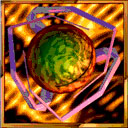

A Technical Guide
of the
iNTRAport
tate@qru.com
david@qru.com
|
Zap the BIOS In a last ditch attempt to heal a system-on-the-fritz, Qru members concluded that the BatteryRAM for the computer's clock was harboring a malicious strain of code, even between cold reboots. Windows proceeded to disk-swap itself into a little ball, and prompting the user with unresolved, mysterious voodoo error messages. There's a funny thing about computers, some times the things you are warned against doing may be the only way to help. Consider solving a pesky problem (viruses) without playing with the software configuration. Impossible you say? No, my friends, it is a mysterious piece of tech magic called "shorting out a bios password". what is the best way to do this? A small flat-head screwdriver used to bridge the pins and reset the battery Ram, current jumps the gap. Just a little zap will do ... But technically, You can't "short out" the bios, you can "short out" the time-clock (which is the only place a virus can stay when the computer is shut off, and the drive is wiped). This persistent trickle of power maintains hard drive partition information (the road map to your disk's layout of information. Your CMOS settings are stored in your BIOS. This is a CMOS (ROM chip), it's not like a CPUclock (it doesn't have power running to it when the computer is off). The only way to wipe your BIOS is wipe your feet on the carpeting and touch it a few times (this is not recommended). Once you wipe your BIOS, your computer won't function until you find someone with an EPROM burner to write you another chip (for your specific Motherboard). Virus can't hide in a BIOS (since it's Read Only), so that's not a problem. As for resetting the CMOS password, shorting out the time clock is the simplest way to do it. There is one other way to reset the password, via a special jumper on the motherboard. When you move this jumper to the closed position, When powered on, the closed jumper short out the password, so you can reset it. It is called a "Password bypass control jumper", just about every computer that has a BIOS that has password protection has this jumper. Every motherboard is different, I would need to look at your motherboard 's manual to find it. I'm guessing it is probably near your PS/2 mouse enable/disable jumper (JP2?). That's where it's at on 2 of my computers (jumper JPX1, usually near JP2). It is usually 3 pins. When pins 1-2 are jumpered then it is in "normal" position, which is password protected. If you forget the password, then you just set the jumper to position 2-3 (jumper the 2nd & 3rd pins). When you power on the system, it will go directly to system boot, it won't pay any attention to password checking. After powering the unit off, remove the pin and the BIOS password will be reset to nothing. Problem Solved.
|
|
September 14, 1998 August 31, 1998 August 16, 1998 August 3,1998 July 19,1998 June 7,1998 March 17,1998 March 3,1998
In This Issue:
Tech Tips
|